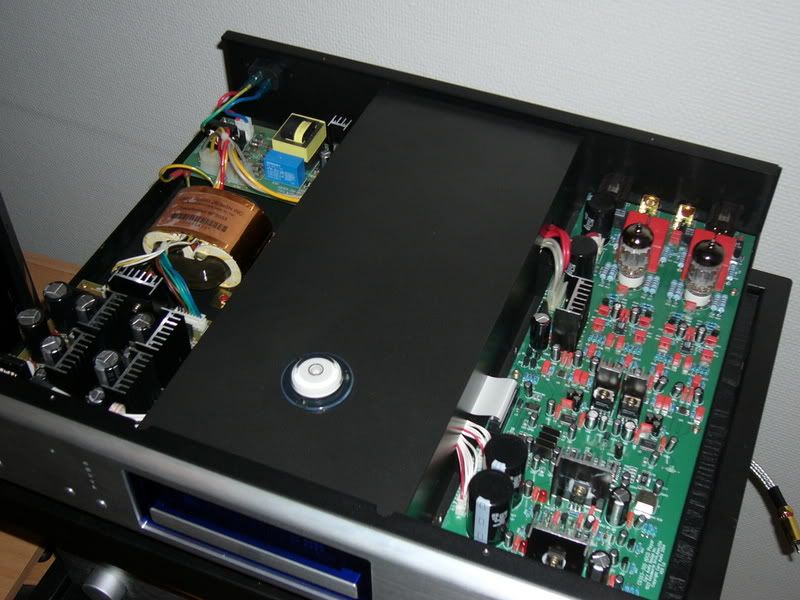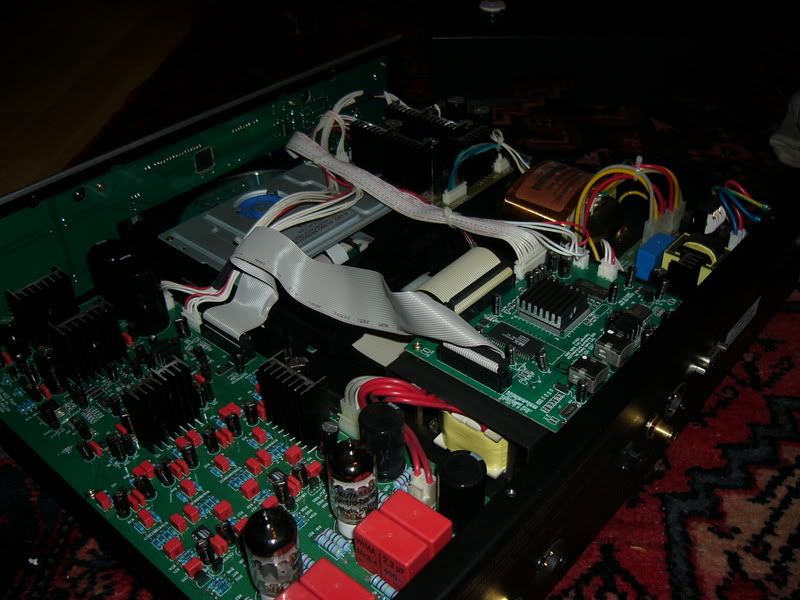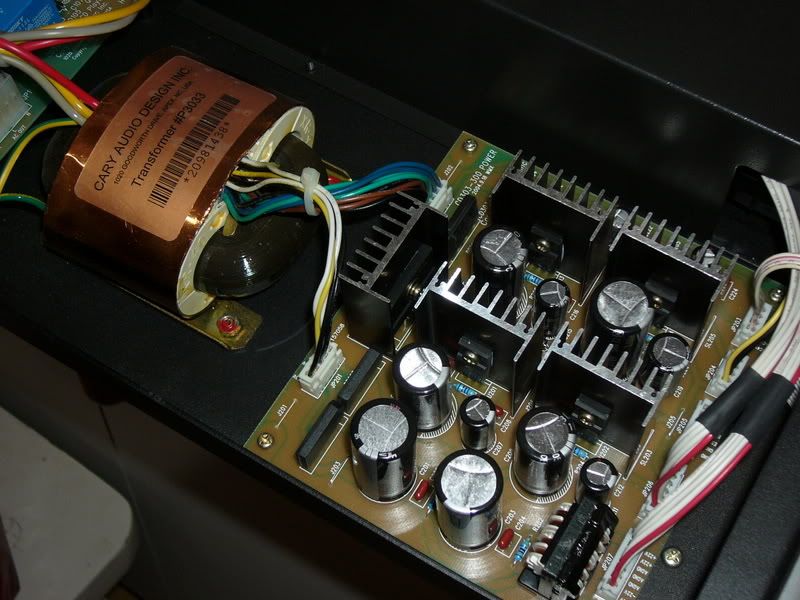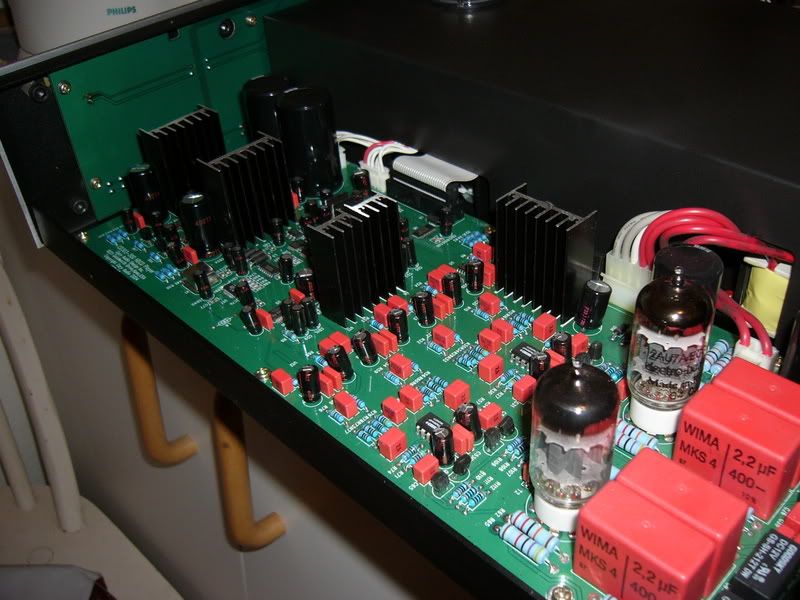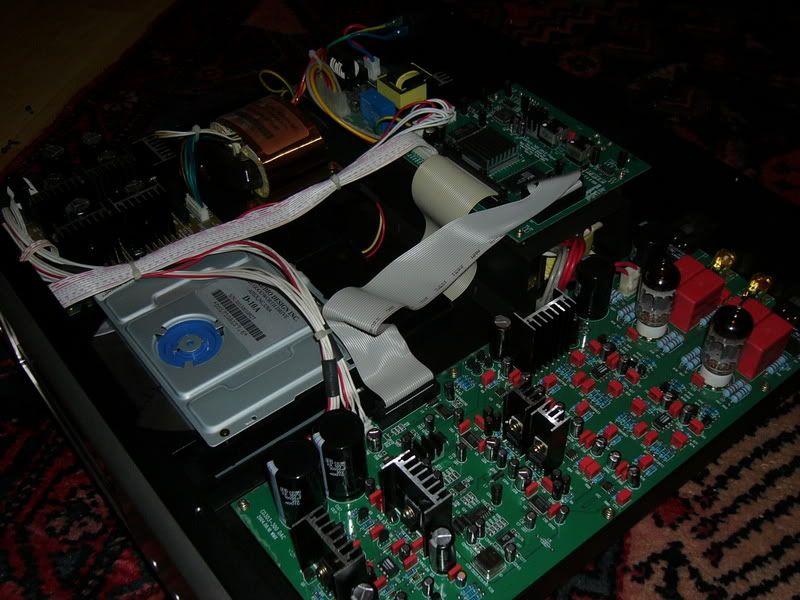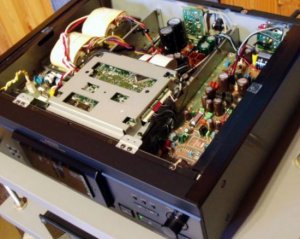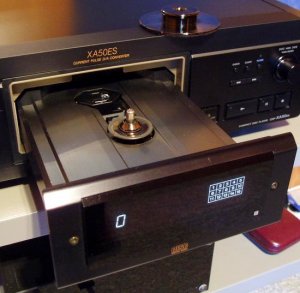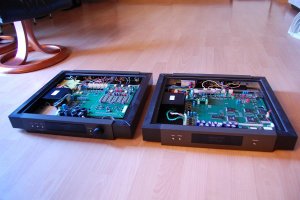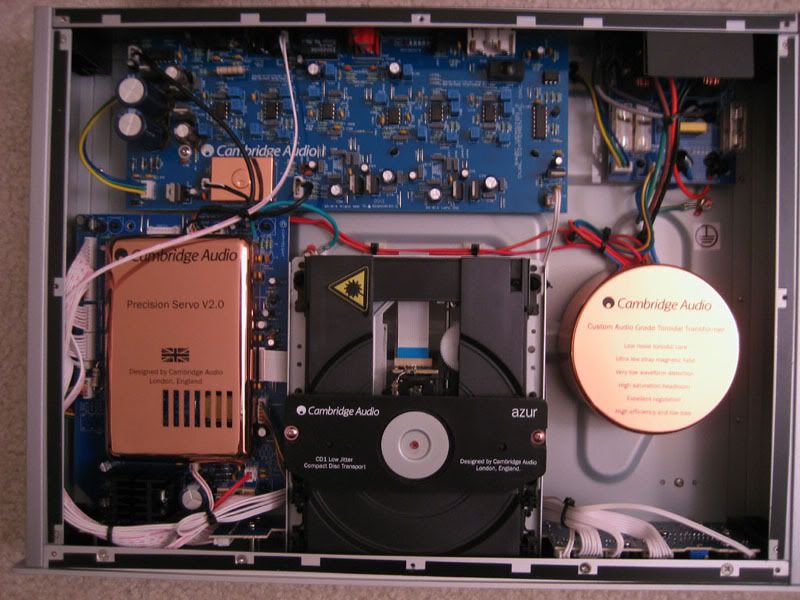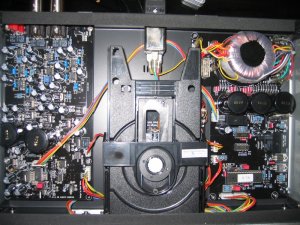Interessant tråd.
Når jeg har spillere til demo så åpner jeg dem straks. Har hatt litt med OEM å gjøre, og vet hvor lett det er å bli lurt. (En grunn til at jeg ikke kjøpte Linns universalspiller, for å si det slik.)
Til dem som måtte være meget tilfreds med å ha brukt 55.000 på en Edge CD-spiller, så kan jeg vise et bilde av innmaten på min Cambridge Azur 840C -- som har digitale innganger, upsampling, osv.
Tilgjengelig for 10.000 i Norge, og 7.000 i UK.
Litt om innmaten:
The Cambridge Audio Azur 840C is the first try, from many years, to devices more expensive than the budget "start". The device has significant dimensions, and is packed with intriguing technologies and solutions. The main characteristic is announced already in the full name of the player: Upsampling Compact Disc. Fortunately the wrong, but often used, sometimes by very renowned companies, nomenclature like 24/192 CD Player, or dumber, was not used. CD is CD and has fixed parameters of the signal 44.1kHz/16bits, and everything above that is an addition, as signaled in the Cambridge Audio name. For the self-restraint - an A. The mentioned name was screen printed on the thick aluminum front panel. We will find on it only a few buttons to access drive functions and two more, marked 'menu' and 'select', not found on CD players, that are used to navigate the menu. The 840C has, in addition of a typical set of outputs, unbalanced analog RCA, digital RCA and TOSLINK, balanced XLR output and two sets (RCA+TOSLINK) digital INPUTS. It can be treated a drive with an elaborated converter section, and playback stereo sound from DVD players, satellite tuner or DAB radio. Every input can be assigned a name, and determined if the input signal is to be upsampled or not. In addition, we can chose the format of the signal on the digital outputs, and decide if we want to add dither or not. If you use a recorder, or a separate converter, then let the dither always be "on". All this operations need a readable display, and in the 840C we have the best one found below 10000z? and above. It is snowy white, exceptionally large LCD display, with black numbers and letters. The track number and time is being displayed on the lower, much larger line of the display - the digits have the same size as the LED displays used in the Lektor players by Ancient Audio, but have worse contrast, and the upper row, with information on upsampling, menu and chosen output is smaller. The enclosure, as usual in CA, is very solid, composed of a few rigid (the sides are also profiled) elements, so the top cover is screwed from the top and not a top with bent sides.
The inside reveals a few interesting things. First of all - the drive. It is a modified Sony drive, with damping elements on the bridge connecting the sides and on the disc clamp ring, and written in Cambridge (or actually in London, where the company is located, in Cambridge resides Arcam...) servo controller program. So I think, that similar like in the case of the modified Philips drive used in devices from QUAD and Audiolab, talking about "own" drive is justified. The circuitry controlling the drive is hidden below a metal screen (interestingly in the cheaper CA players it is covered with copper...) and here is also the power supply for this section. The drive is located on a very solid, specially shaped "spider" from cast aluminum, looking similar to Finite Elemente tables, in the right scale, o course. The power is supplied by a large toroidal transformer, larger than the one in the tested in this issue E-Sound CD-5E EWAE player, but smaller than the one found in the universal player from Bladelius, the Freja MkII (also tested in this issue). From the transformer three separate secondary windings are supplying independently the upsampling circuitry, converters and analog section. On a large circuit board in the back of the enclosure expanded filtering and rectifying circuits are found, with, among others, a bank of ten nice looking capacitors with Cambridge Audio logo.
The most important IC is the upsampling chip. This is a DSP chip, with software in the Q5 version, prepared by the French company Anagram Technologies, changing the input words to 24/384kHz and output that signal to the converters. Those, hidden behind the power rectifiers heat sinks, were provided by Analog Devices and this are two ICs (one for each channel) AD1955 - multi bit converters delta-sigma 24/192, with a very high, real resolution of 20 bits. The circuit is internally balanced and has such an output. In the current/voltage conversion Burr-Browna OPA842 chips are working, and in the filters and output the ICs OPA2134 of the same company. The output is coupled by a DC-Servo circuit. The whole assembly is SMD, except for the power supply, and the WIMA capacitors in the filters near the converters. The outputs are keyed with relays. The whole looks really impressive.
The only problem is that I cannot see how the signal is led from the drive to the converter, because this path is bridged by only one, shielded cable (two wires and shield), which provides the signal (in a balanced form) to the upsampling chip. This is not the I2S, protocol, so if this is the only way, then the signal is transferred in that balanced form of S/PDIF.
 . Her er innmaten til Cary 303/300. Masse billige komponenter, men byggkvaliteten er det vel ikke mye å si på :
. Her er innmaten til Cary 303/300. Masse billige komponenter, men byggkvaliteten er det vel ikke mye å si på : . Men lyden på inn- og utmatingen høres veldig billig ut
. Men lyden på inn- og utmatingen høres veldig billig ut  . Noe den er også (DVD drev).
. Noe den er også (DVD drev). 







